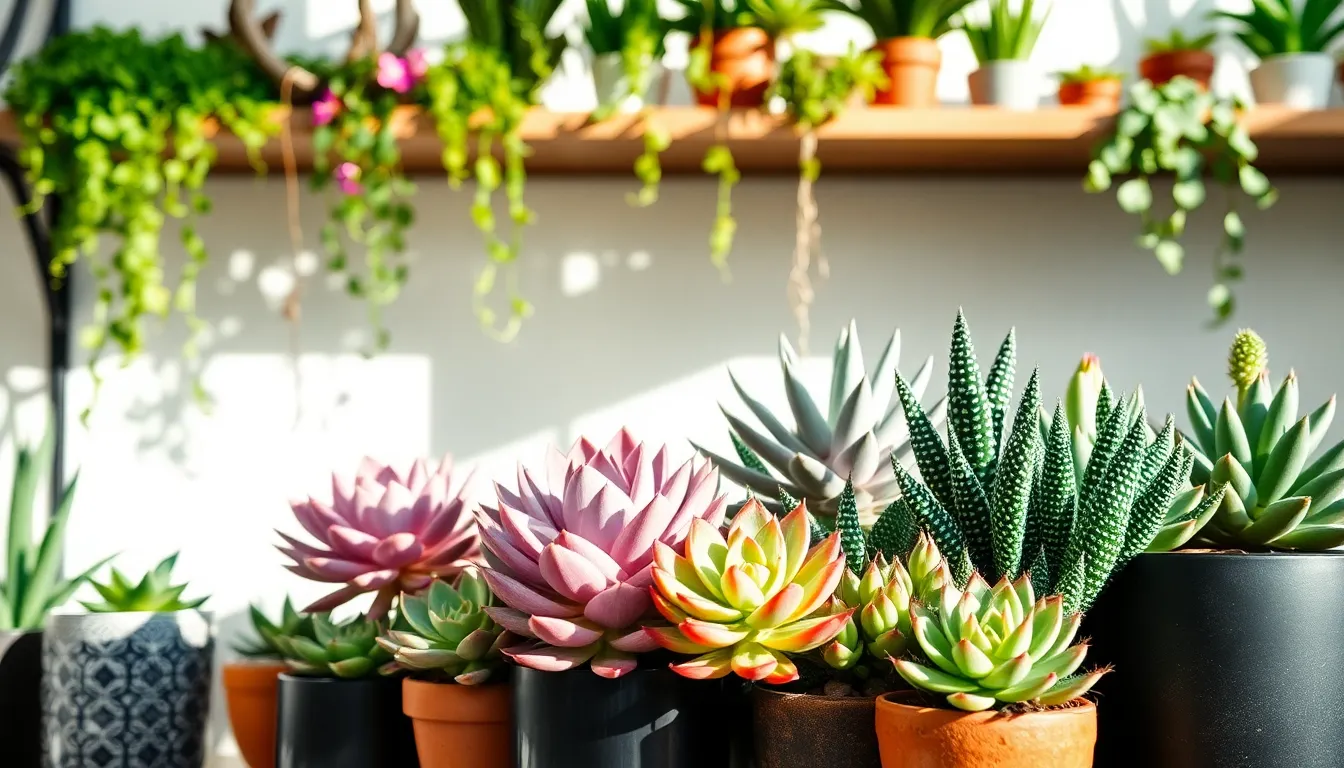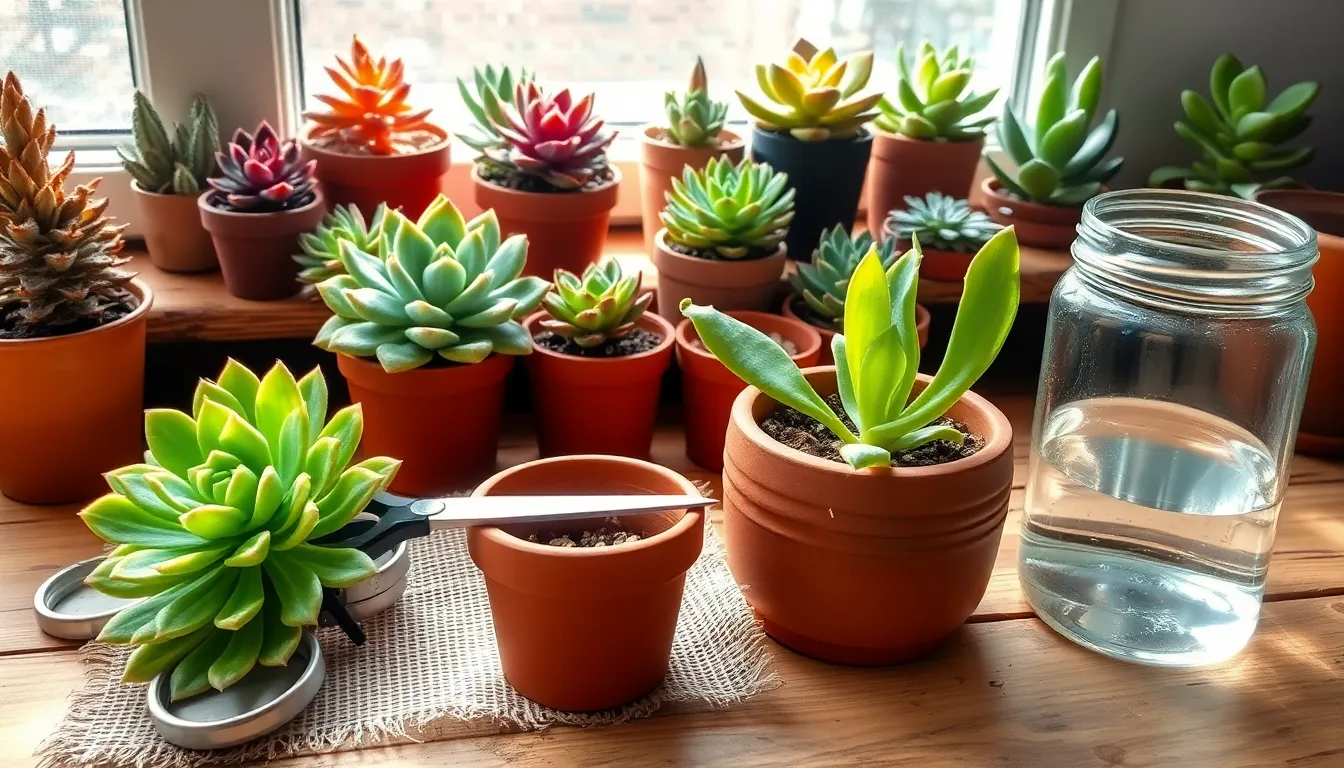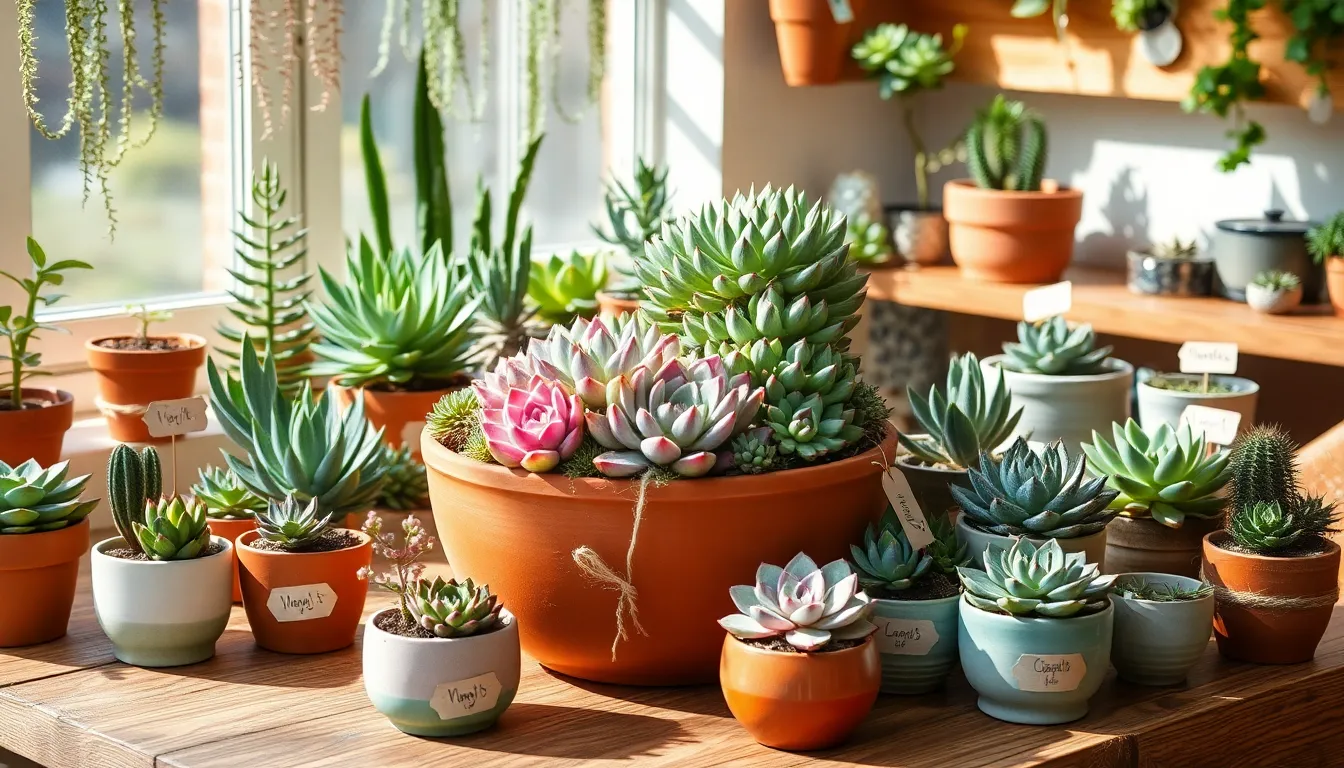Welcome to the world of indoor succulents, where both beginners and seasoned gardeners can find joy in nurturing these resilient, beautiful plants. Whether you’re just starting out or adding to your leafy collection, “Top 12 Succulents That Thrive Indoors” is your ticket to creating a lush, green haven right inside your home.
Imagine transforming your living space into a vibrant oasis, with each succulent offering its unique charm and easy-care nature. This guide is crafted to introduce you to a selection of hardy plants that promise to flourish even if your thumb isn’t the greenest, ensuring your gardening journey is both rewarding and stress-free.
Dive into this list and discover the practical benefits of having these adaptable plants in your home, from improving air quality to adding aesthetic appeal. With expert tips and insights, you’ll feel empowered to cultivate a thriving indoor garden that not only survives but truly thrives, filling your life with the satisfaction and joy of successful gardening.
Echeveria ‘Lola’ (Echeveria derenbergii)
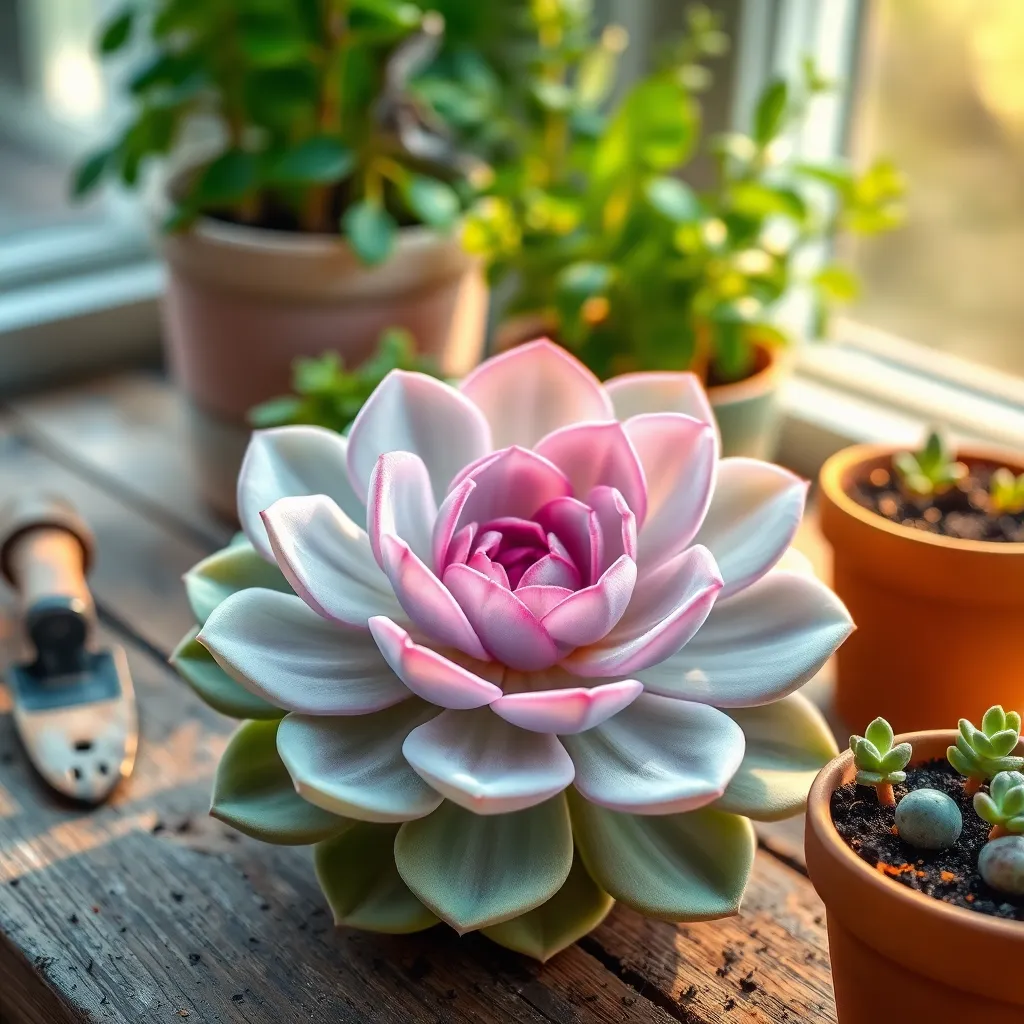
Echeveria ‘Lola’ is a stunning succulent known for its rosette of opalescent, pale pink leaves. It thrives indoors with the right care, making it a favorite among indoor gardeners.
To keep Echeveria ‘Lola’ healthy, provide it with bright, indirect sunlight by placing it near a south or east-facing window. While it loves sunlight, avoid direct midday rays to prevent leaf scorch.
Watering is crucial for this succulent; allow the soil to dry out completely between waterings. Overwatering can lead to root rot, so ensure the pot has excellent drainage.
Use a well-draining soil mix, such as a cactus or succulent blend, to prevent waterlogging. Adding perlite or pumice can enhance drainage and aeration for the roots, promoting healthy growth.
Panda Plant (Kalanchoe tomentosa)
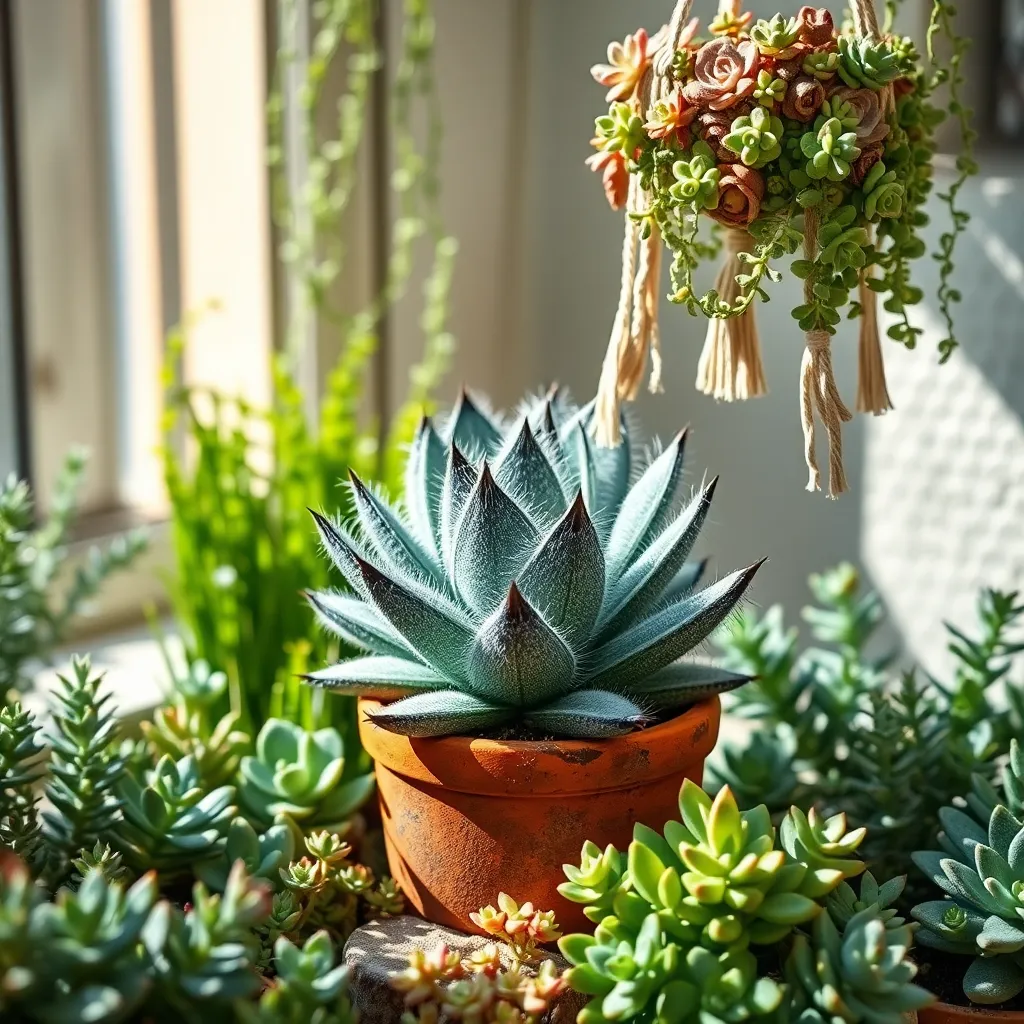
The Panda Plant, also known as Kalanchoe tomentosa, is an attractive succulent that thrives in indoor environments. Its soft, furry leaves with distinctive brown tips make it a favorite among plant enthusiasts looking for a unique addition to their collection.
This resilient plant prefers indirect sunlight, making it ideal for rooms with filtered lighting. Place it near a window with sheer curtains to ensure it receives enough light without being scorched by direct sun.
When it comes to watering, the Panda Plant requires a careful approach. Allow the soil to dry out completely between waterings to prevent root rot, typically watering it every two to three weeks depending on your home’s humidity levels.
For optimal growth, use a well-draining cactus or succulent potting mix. Adding perlite or coarse sand to regular potting soil can improve drainage, which is crucial for the plant’s health.
Beginners will find this plant easy to care for, while advanced gardeners can experiment with propagation from leaf cuttings. Simply take a healthy leaf, let it dry for a few days, and plant it in soil to multiply your collection.
String of Pearls (Senecio rowleyanus)
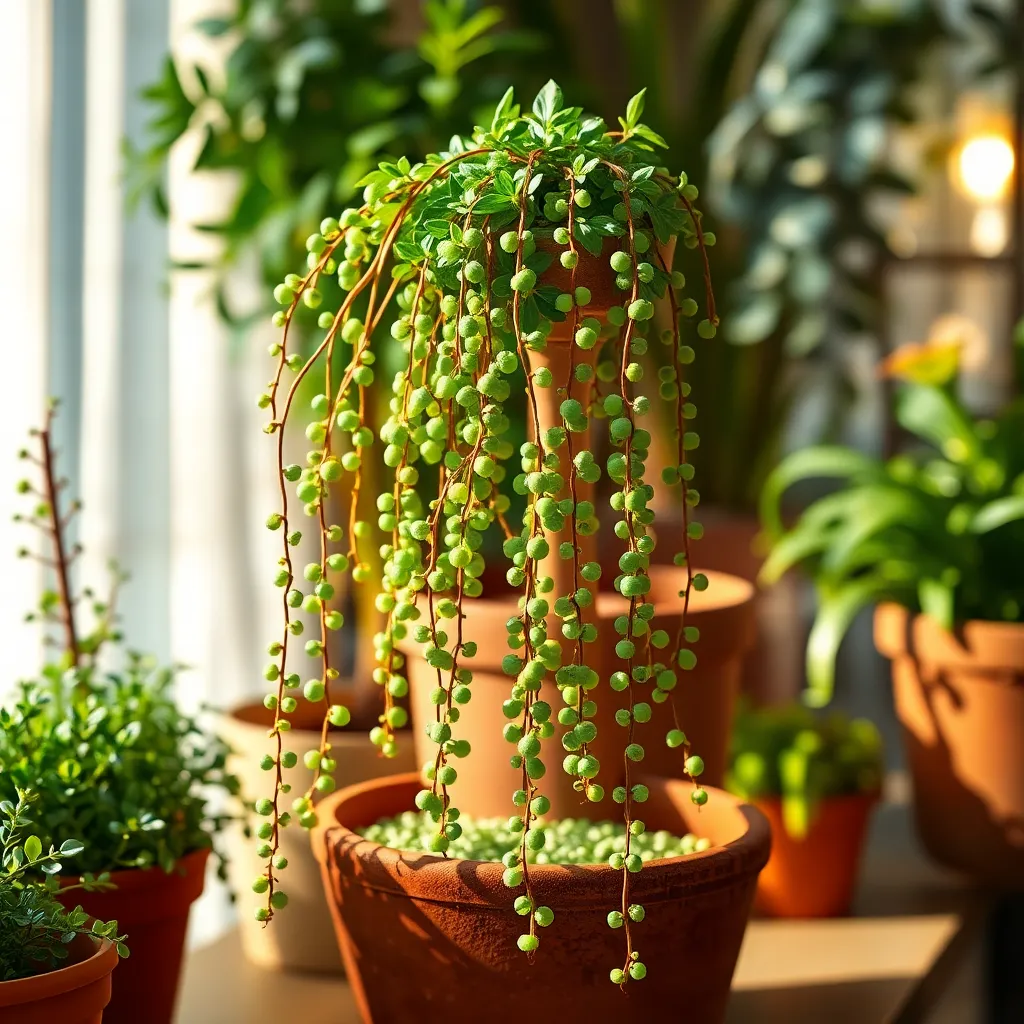
String of Pearls (Senecio rowleyanus) is an eye-catching succulent known for its cascading stems adorned with spherical, pearl-like leaves. This plant is perfect for hanging planters where its trailing vines can create a unique visual display in your home.
To thrive indoors, place your String of Pearls in a spot with bright, indirect sunlight. Direct sunlight can scorch its leaves, so a location near a window with filtered light is ideal.
When it comes to watering, allow the soil to dry out completely between waterings to prevent root rot—a common issue with succulents. A good rule of thumb is to water every two weeks in the growing season and reduce watering during the winter months.
Use a well-draining cactus or succulent soil mix to ensure proper drainage. Adding perlite or pumice can enhance drainage, which is crucial for preventing waterlogged soil.
Aloe Vera (Aloe barbadensis miller)

Aloe Vera (Aloe barbadensis miller) is a popular choice for indoor gardening due to its low maintenance and diverse benefits. This succulent is renowned for its soothing gel, often used in skincare and medicinal remedies.
To thrive indoors, Aloe Vera requires a well-draining potting mix, ideally a cactus or succulent soil. Ensure the pot has drainage holes to prevent water from accumulating at the roots, which can lead to rot.
Place your Aloe Vera in a spot where it can receive bright, indirect sunlight for at least six hours a day. Direct sunlight can scorch the leaves, so if you notice browning, move it to a slightly shadier location.
Water Aloe Vera sparingly, allowing the soil to dry out completely between waterings. During the winter months, reduce watering frequency as the plant’s growth slows down.
For advanced care, consider fertilizing your Aloe Vera once a month during the growing season with a balanced, water-soluble fertilizer diluted to half strength. Repot every couple of years in the spring to refresh the soil and accommodate growth.
Snake Plant ‘Laurentii’ (Sansevieria trifasciata)
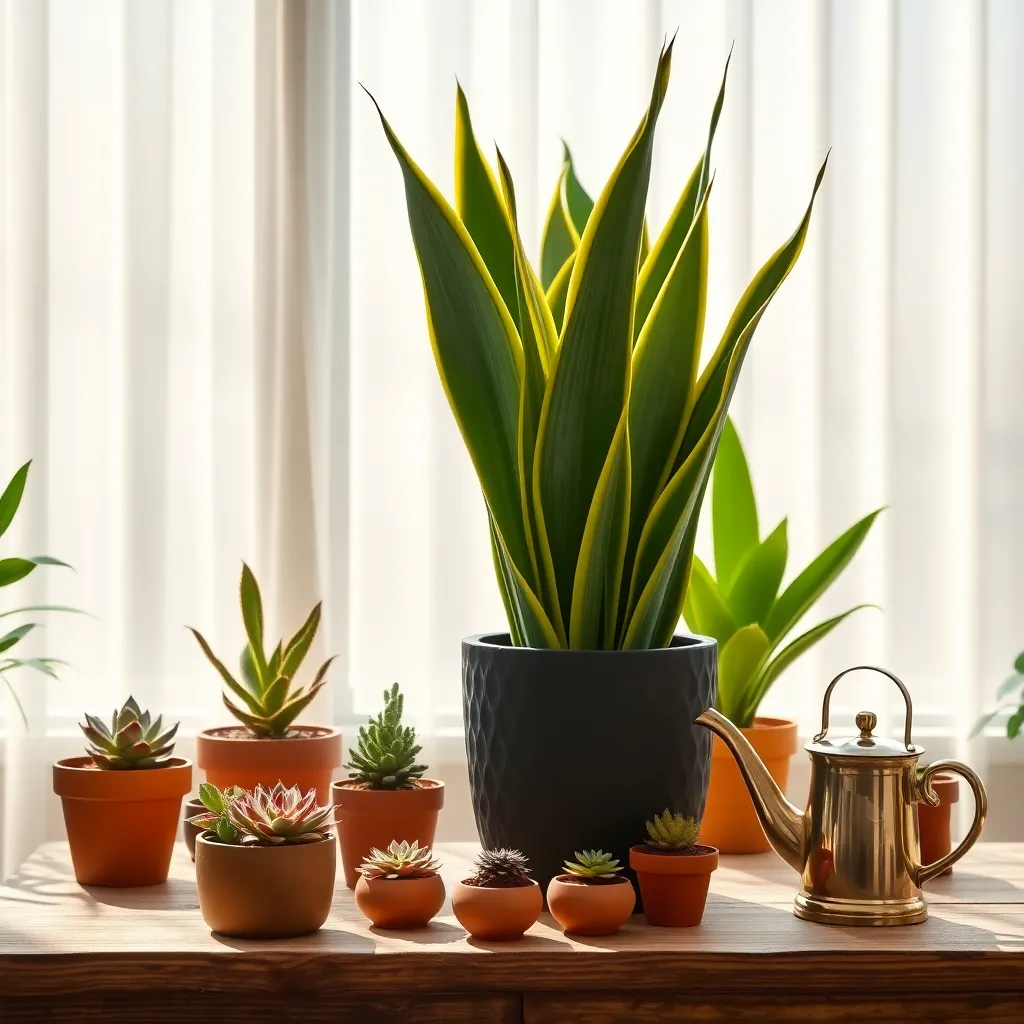
The Snake Plant ‘Laurentii’ (Sansevieria trifasciata) is a resilient indoor succulent that even beginners can successfully grow. Known for its striking upright leaves edged in yellow, this plant is both visually appealing and low-maintenance.
To thrive, the Snake Plant prefers well-draining soil, such as a cactus potting mix. Ensure the pot has drainage holes to prevent root rot, as these plants are sensitive to overwatering.
Watering is key to maintaining your Snake Plant’s health. Allow the soil to dry out completely between waterings, typically watering every 2 to 6 weeks, depending on the season and humidity levels.
While the Snake Plant can tolerate low light, it grows best in bright, indirect light. If you’re looking to encourage faster growth, place it near a sunny window but avoid direct sun, which can scorch the leaves.
Burro’s Tail (Sedum morganianum)

Burro’s Tail (Sedum morganianum) is a charming succulent known for its trailing stems and plump, blue-green leaves. This plant is perfect for hanging baskets, where its cascading growth can truly shine.
To keep your Burro’s Tail thriving, ensure it receives bright, indirect light. Direct sunlight can scorch its leaves, so placing it near a window with filtered light is ideal.
When it comes to watering, allow the soil to dry out completely between waterings. Overwatering can lead to root rot, a common issue with succulents, so it’s better to err on the side of underwatering.
For the best results, use a well-draining cactus or succulent soil mix. You can also add perlite or sand to improve drainage.
Zebra Haworthia (Haworthia attenuata)
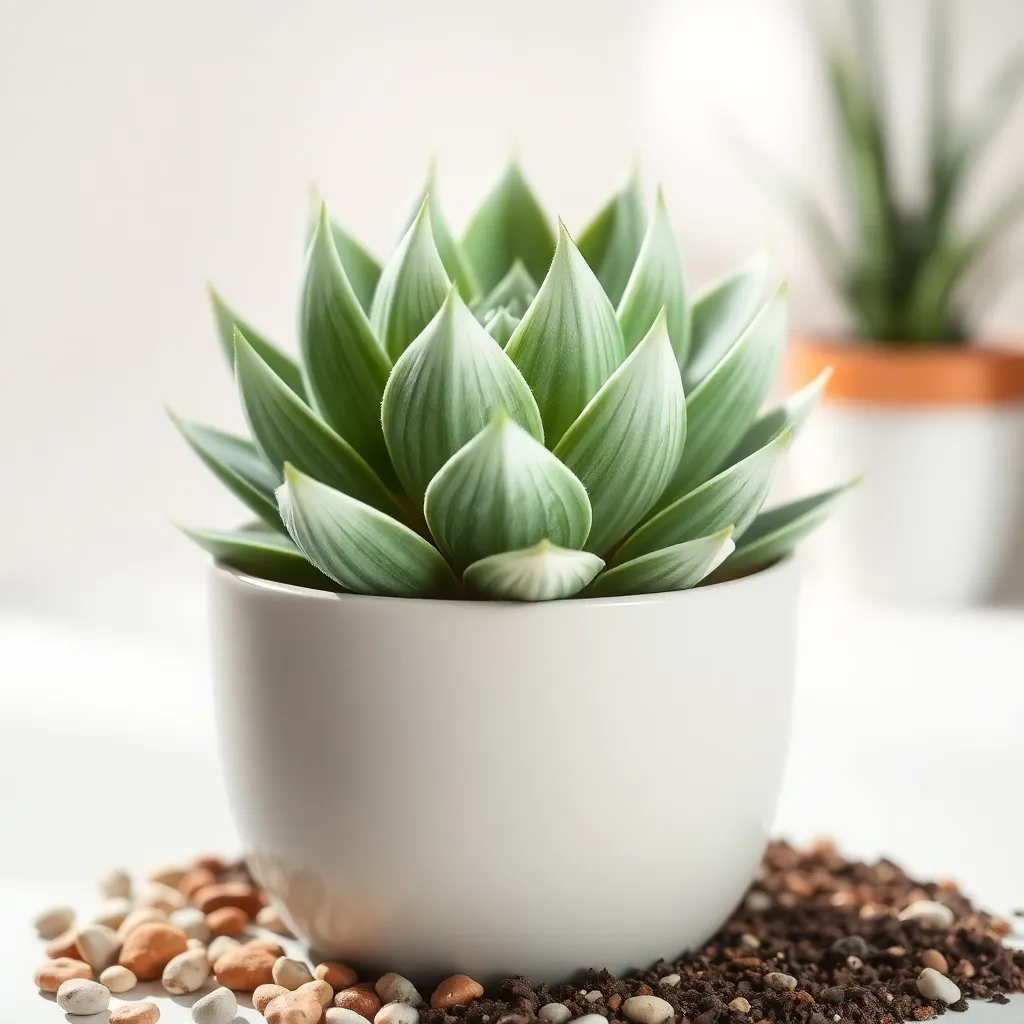
The Zebra Haworthia (Haworthia attenuata) is a striking succulent known for its distinctive white-striped leaves. It thrives indoors, making it a perfect choice for those looking to add a touch of greenery to their home without needing extensive outdoor space.
To ensure optimal growth, place your Zebra Haworthia in a spot that receives bright, indirect light. Direct sunlight can scorch its leaves, so it’s best to keep it near a window with filtered light or use sheer curtains to diffuse the sunlight.
When it comes to watering, the Zebra Haworthia prefers to be on the drier side. Water it thoroughly but infrequently, allowing the soil to dry out completely between waterings, typically every two to three weeks.
Soil choice is crucial for this succulent, as it requires excellent drainage to prevent root rot. Use a cactus or succulent-specific soil mix, or create your own by combining regular potting soil with sand or perlite to enhance drainage.
For those looking to propagate, Zebra Haworthia can be easily multiplied through offsets, which are small clones that grow at the base of the mother plant. Carefully remove these offsets and plant them in their own containers using the same well-draining soil mix to expand your collection effortlessly.
Ghost Plant (Graptopetalum paraguayense)
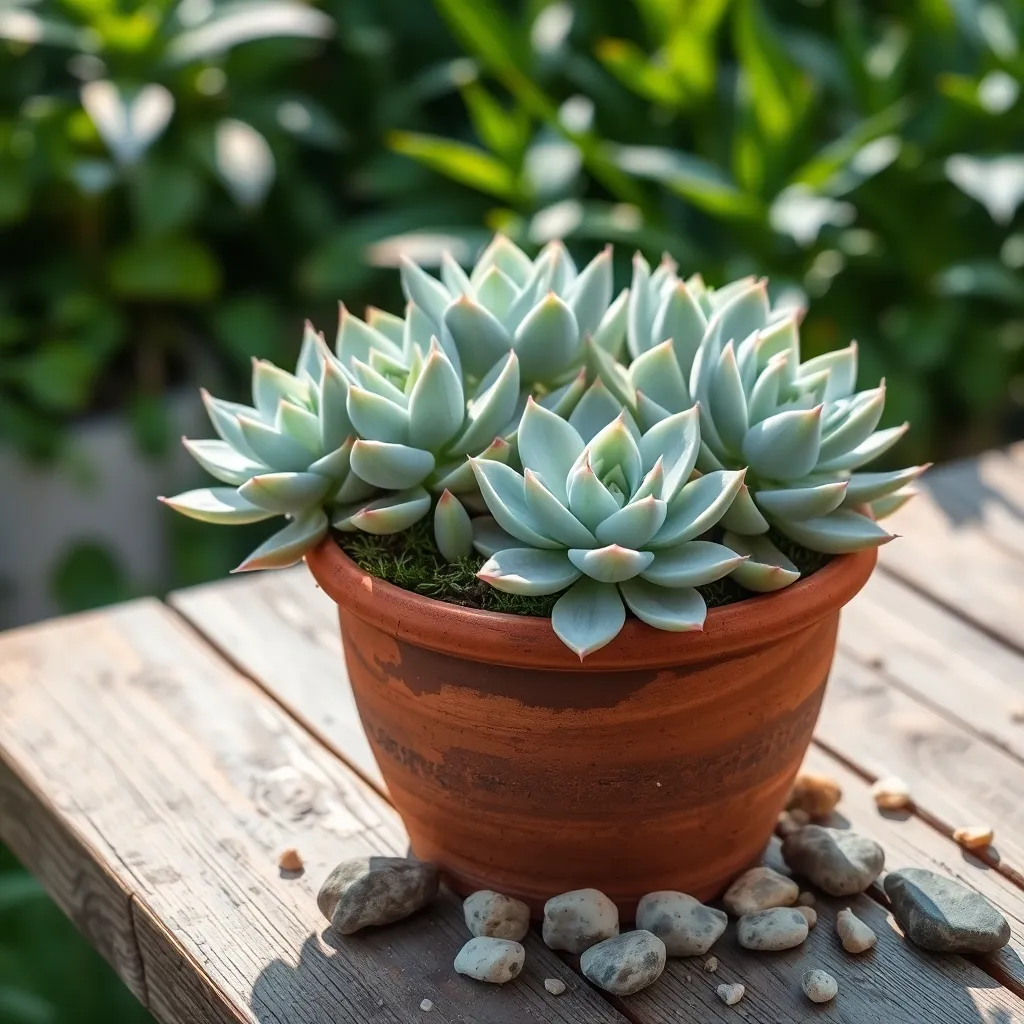
The Ghost Plant (Graptopetalum paraguayense) is a captivating succulent known for its rosette of fleshy, pastel-colored leaves that shimmer with an iridescent glow. This plant thrives indoors when provided with the right care, making it an excellent choice for both beginners and seasoned gardeners.
For optimal growth, place your Ghost Plant in a spot where it will receive bright, indirect sunlight, such as a south or east-facing window. Although it can tolerate some direct sunlight, too much can scorch the leaves, so monitor its exposure carefully.
When it comes to watering, the Ghost Plant prefers a ‘soak and dry’ method. Allow the soil to dry out completely between waterings, typically every 10 to 14 days, depending on your home’s humidity levels.
Use a well-draining soil mix specifically designed for succulents and cacti to prevent root rot. You can create your own mix by combining equal parts potting soil, coarse sand, and perlite for excellent drainage and aeration.
Advanced gardeners may wish to propagate the Ghost Plant, which is easily done through leaf cuttings. Simply twist off a healthy leaf and allow the end to callous over for a few days before placing it on top of moist soil, where it will eventually root and grow into a new plant.
Flapjack Succulent (Kalanchoe thyrsiflora)
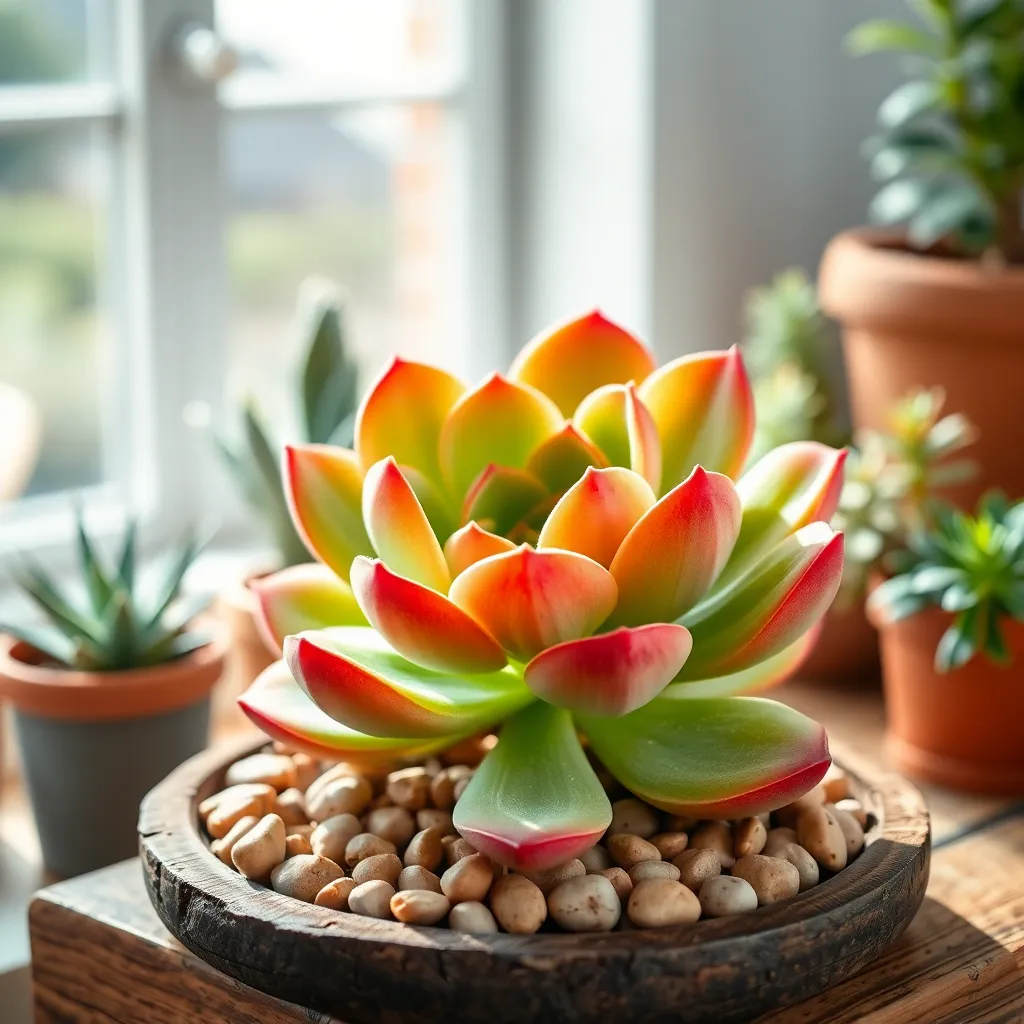
Known for its striking paddle-shaped leaves, the Flapjack Succulent (Kalanchoe thyrsiflora) is a popular choice for indoor gardening. This plant thrives in bright, indirect sunlight and can tolerate some direct sun, making it ideal for a sunny windowsill.
To keep your Flapjack Succulent healthy, use a well-draining soil mix, such as a commercial cactus mix or a homemade blend of potting soil, sand, and perlite. Water the plant thoroughly but infrequently, allowing the soil to dry out completely between waterings to prevent root rot.
For beginners, a simple watering schedule of once every two to three weeks should suffice, depending on your home’s humidity and light conditions. Advanced gardeners might consider rotating the plant periodically to ensure even growth and prevent leaning.
Fertilize your Flapjack Succulent in the spring and summer with a diluted, balanced fertilizer to support its growth. During the winter months, when the plant is dormant, reduce watering and skip fertilization to mimic its natural cycle.
Lithops ‘Living Stones’ (Lithops spp.)

Lithops, commonly known as ‘Living Stones’, are fascinating succulents that mimic the appearance of small stones or pebbles. These unique plants are perfect for indoor gardening because they require minimal space and care.
To successfully grow Lithops, it’s essential to use a well-draining soil mix, such as a cactus or succulent blend. Ensure the pot has drainage holes to prevent water from accumulating, which can cause root rot.
Watering Lithops requires a bit of restraint; they thrive on neglect. Water sparingly during their active growing season, which typically occurs in the spring and fall, and reduce watering significantly in the winter months.
For optimal growth, place Lithops in a bright location where they can receive several hours of indirect sunlight daily. Too much direct sunlight, however, can cause their leaves to scorch, so it’s important to find a balance.
Advanced gardeners can experiment with propagating Lithops by seed, though patience is required as germination can be slow. Keep the soil slightly moist until seedlings appear, then gradually reduce watering to encourage healthy growth.
Pincushion Cactus (Mammillaria crinita)

The Pincushion Cactus (Mammillaria crinita) is a delightful addition to any indoor succulent collection, known for its charming, rounded form covered in fine spines. This compact cactus thrives in bright, indirect light, making it ideal for a sunny windowsill or under a grow light if natural sunlight is limited.
To keep your Pincushion Cactus healthy, ensure it’s planted in a well-draining cactus mix that mimics its natural arid environment. A simple mix of one part potting soil, one part coarse sand, and one part perlite or pumice will provide the perfect blend for optimal drainage.
Water this cactus sparingly, allowing the soil to dry out completely between waterings, which generally means watering every two to three weeks. In the winter months, reduce watering even further as the plant enters a period of dormancy, requiring minimal moisture.
For advanced care, consider rotating the pot every few weeks to ensure even growth and prevent the cactus from leaning towards the light source. Additionally, feeding your Pincushion Cactus with a diluted cactus fertilizer once a month during the growing season can promote robust growth and potentially encourage blooming.
Christmas Cactus (Schlumbergera bridgesii)
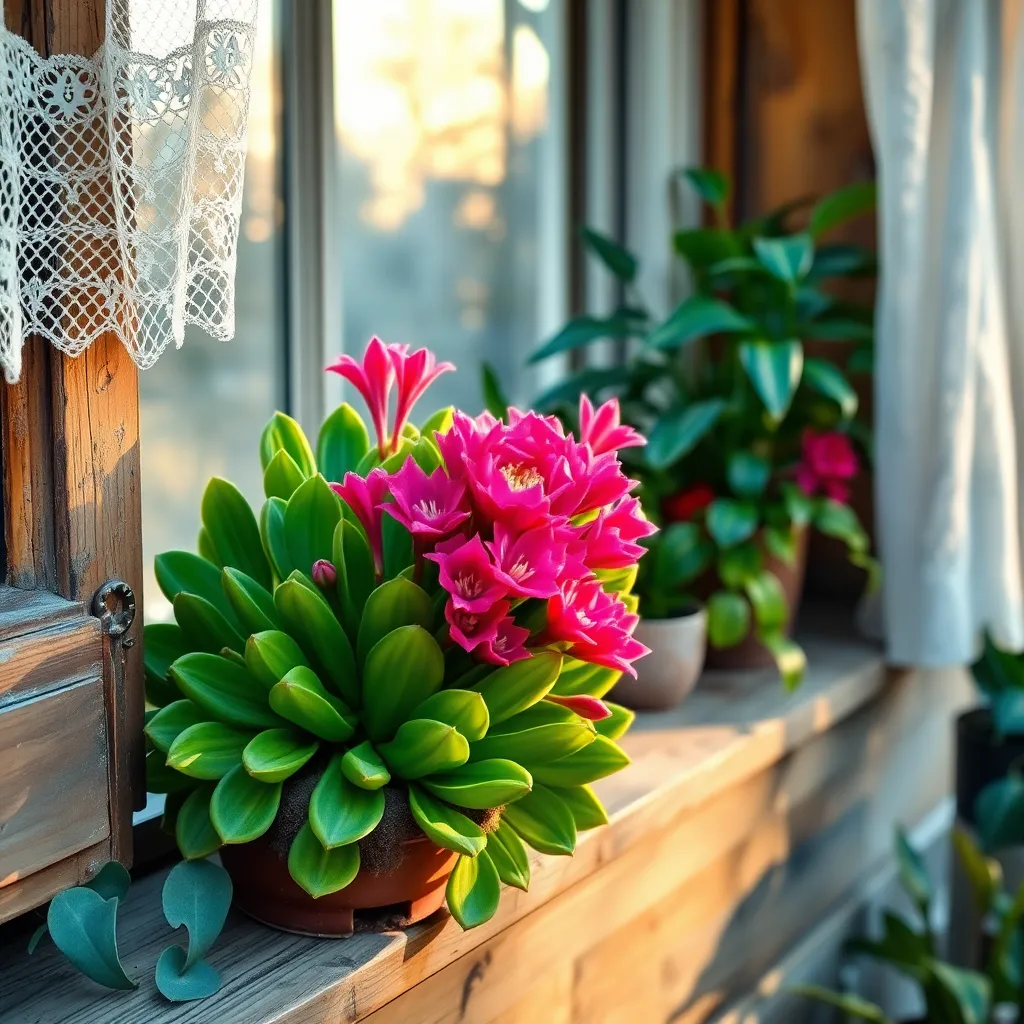
The Christmas Cactus (Schlumbergera bridgesii) is a charming indoor succulent known for its vibrant blooms during the holiday season. Ideal for both novice and experienced gardeners, this plant brings a splash of color to any room.
To ensure your Christmas Cactus thrives, it’s crucial to provide bright, indirect light. Direct sunlight can scorch its leaves, so place it near a north or east-facing window for optimal growth.
Watering requires balance; these cacti prefer their soil to dry out slightly between waterings. During the blooming period, maintain a more consistent watering schedule to support healthy flower development.
For soil, use a well-draining potting mix, like a cactus or succulent blend, to prevent root rot. Consider adding perlite or orchid bark to enhance drainage, particularly if you’re crafting your own soil mix.
Advanced gardeners might experiment with light exposure to encourage blooming. Placing your Christmas Cactus in a dark room for 12-14 hours a day over several weeks can trigger a more abundant flowering cycle.
Conclusion: Growing Success with These Plants
In exploring the ‘Top 12 Succulents That Thrive Indoors’, we’ve delved into essential relationship concepts such as patience, adaptability, nurturing, resilience, and communication, drawing parallels between thriving succulents and flourishing relationships. Each succulent symbolizes a key aspect, from the Aloe Vera’s healing properties reflecting the importance of forgiveness, to the Jade Plant’s prosperity reminding us of the value of shared goals. We’ve also discussed the benefits of mutual support, like the Haworthia’s ability to thrive in tough conditions, and the significance of creating a nurturing environment akin to the Echeveria’s need for light.
Now, take a moment to reflect on which of these relationship concepts you can nurture today. Perhaps it’s time to practice forgiveness or work on supporting your partner more actively. Choose one and make a small, meaningful change.
Remember, relationships, like succulents, require consistent care and attention to flourish. Bookmark or save this article as a valuable resource for your relationship toolkit. As you cultivate these qualities, you’re not only setting the stage for a more resilient and thriving relationship today, but you’re also laying the foundation for enduring success and happiness in the future. Embrace the journey and watch your relationship blossom!

